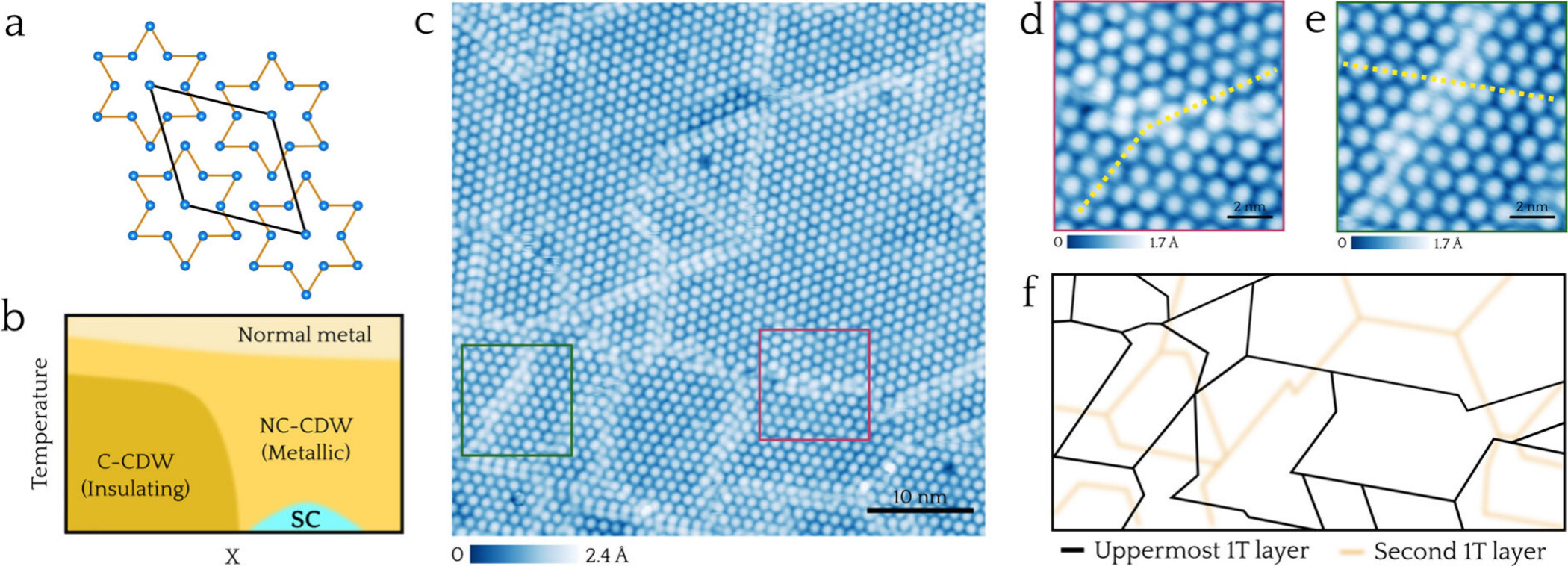A clash of quantum states in the mosaic phase of a transition metal dichalcogenide
Imagine a material where electrons glide through without any resistance, moving like a perfectly synchronized dance troupe. This phenomenon, known as superconductivity, allows electricity to flow with zero energy loss, holding immense promise for everything from ultra-efficient power lines to advanced quantum computers. A a team of researchers dives 1 into this fascinating world, focusing on a material called 1T-TaSSe, a member of the transition metal dichalcogenide family. By blending tantalum, sulfur, and selenium, this material becomes a stage for a complex interplay of quantum behaviors. Their findings challenge long-held assumptions and shed light on how superconductivity can thrive even amid structural disorder.
A clash of quantum states

In 1T-TaSSe, two remarkable phenomena compete for dominance: superconductivity and a charge density wave (CDW). Picture a charge density wave as a rhythmic pattern where electrons arrange themselves like waves on a calm sea, creating regions where electricity struggles to flow. Superconductivity, by contrast, is all about electrons pairing up to move freely, like partners waltzing effortlessly across a dance floor. In 1T-TaSSe, these two states coexist, and their interaction is key to understanding the material’s behavior. The researchers were particularly interested in a version of 1T-TaSSe that exists in a “mosaic phase,” where the charge density wave breaks into small patches, like a quilt with distinct squares separated by boundaries called domain walls. They wanted to know if these domain walls were the secret to superconductivity or if something else was at play.
Zooming into the atomic scale
To investigate, the team used a tool called scanning tunneling spectroscopy (STS), which acts like a super-powered microscope. It can pinpoint individual atoms and reveal how electrons behave at specific spots on the material’s surface. By cooling 1T-TaSSe to a chilly 0.5 Kelvin—near absolute zero—they could observe the material when superconductivity kicks in. The STS images showed a patchwork of charge density wave domains, each with a unique structure where tantalum atoms form a star-like pattern, rotated at a specific angle. This structure is like the material’s fingerprint, giving it distinct electronic properties.
What they found was unexpected. Many scientists thought the domain walls—those boundaries between patches—might be where superconductivity thrives. Instead, the team discovered that superconductivity was strongest within the charge density wave domains themselves, not at their edges. These domains, connected across the material, formed a network that allowed electrons to flow freely, supporting superconductivity. When the temperature was raised just enough to disrupt superconductivity, the domain walls showed different electronic behavior, suggesting they weren’t the main drivers of this phenomenon.
The role of layers
1T-TaSSe is a layered material, like pages stacked in a book. The researchers found that the way these layers interact is crucial. In the mosaic phase, the charge density wave loses its uniform order, creating a metallic state where electrons can move more easily. This happens because electrons can “tunnel” between layers, a process where they hop from one layer to another, almost like commuters moving between floors of a building. This interlayer tunneling in 1T-TaSSe is what fuels superconductivity, rather than the domain walls within each layer. The addition of selenium to the mix, compared to its cousin 1T-TaS₂, enhances this effect, making 1T-TaSSe a better candidate for superconductivity when its layers are carefully separated or “delaminated.”
Why 1T-TaSSe matters
The inclusion of selenium in 1T-TaS₂ to yield 1T-TaSSe is a game-changer. By tweaking the chemical makeup of the material, scientists can fine-tune its properties. The study shows that selenium helps stabilize the mosaic phase, making it easier for the material to transition into a superconducting state. This discovery challenges earlier ideas that pinned superconductivity on domain walls and highlights the importance of the charge density wave domains and their three-dimensional connections. For a general audience, think of it like discovering a new ingredient in a recipe that makes your cake rise higher—selenium is that special touch that enhances the material’s superconducting potential.
This finding is exciting because it opens new pathways for designing materials with tailored properties. Transition metal dichalcogenides like 1T-TaSSe are like playgrounds for physicists, offering a chance to explore how different quantum states interact. By mapping the electronic landscape at the atomic level, the researchers have provided a clearer picture of how superconductivity emerges in these materials, which could guide the development of new technologies.
The road ahead
This study is a stepping stone toward unlocking the full potential of quantum materials. The role of selenium in 1T-TaSSe suggests that further tweaks to the material’s composition or layer structure could push its superconducting abilities even further. Future research might explore how different combinations of elements or changes in layer stacking affect the balance between charge density waves and superconductivity. For now, this work reminds us of the intricate beauty of the quantum world, where tiny changes in a material’s makeup can lead to dramatic effects. By continuing to probe materials like 1T-TaSSe, scientists are paving the way for innovations that could transform how we harness and use energy in the future.
Author: César Tomé López is a science writer and the editor of Mapping Ignorance
Disclaimer: Parts of this article may have been copied verbatim or almost verbatim from the referenced research paper/s.
References
- Sandra Sajan, Haojie Guo, Tarushi Agarwal, Irián Sánchez-Ramírez, Chandan Patra, Maia G. Vergniory, Fernando de Juan, Ravi Prakash Singh, Miguel M. Ugeda (2025) Atomic-Scale Mapping of Superconductivity in the Incoherent CDW Mosaic Phase of a Transition Metal Dichalcogenide Nano Letters doi: 10.1021/acs.nanolett.5c00757 ↩